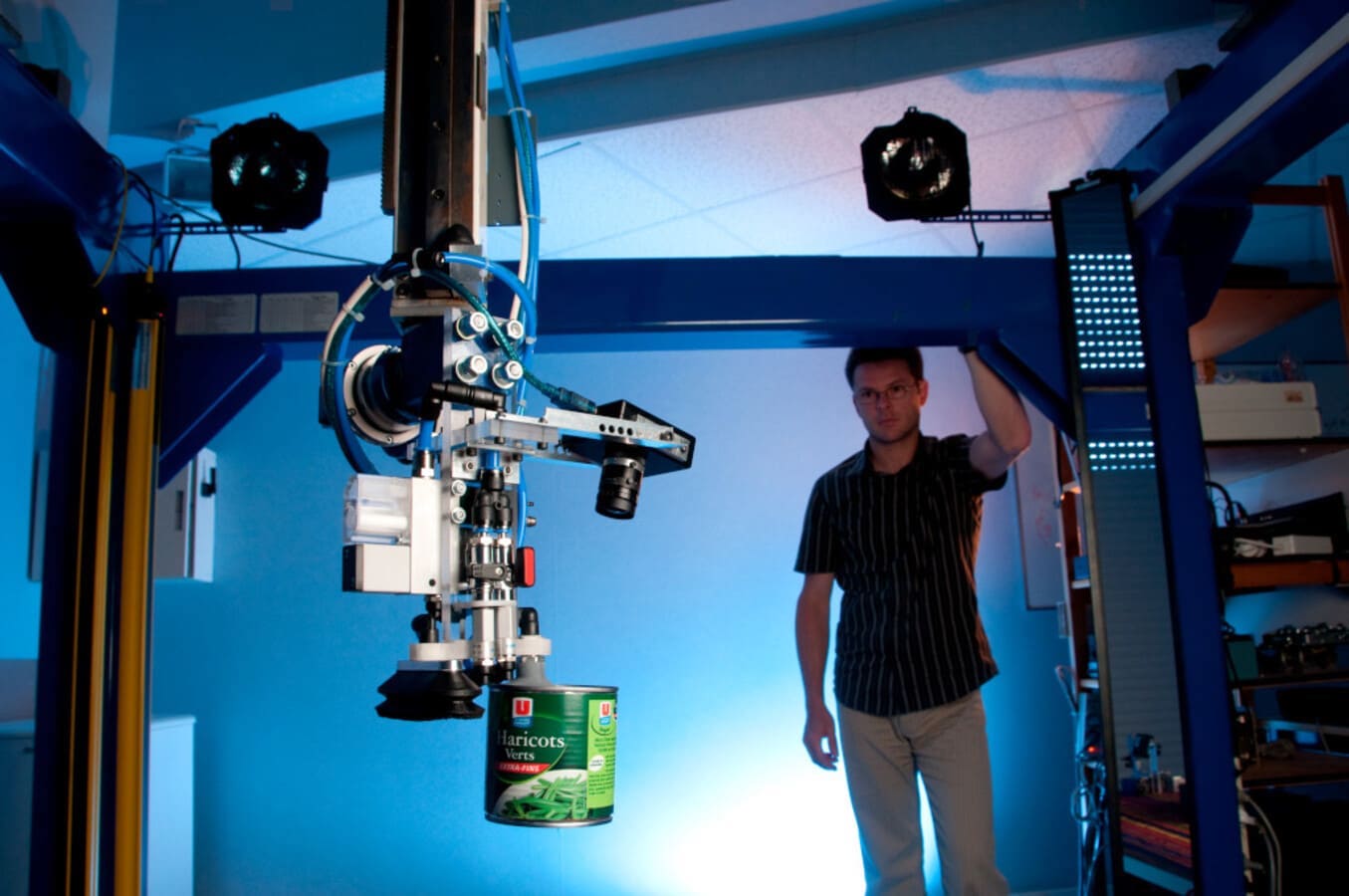TIRREX: an accelerator for French robotics research
Date:
Changed on 20/03/2025

"TIRREX, is a kind of reactor for robotics research. It provides teams with complementary skills with a framework, a roadmap and the financial resources to get to know each other better, collaborate more closely and develop the robots of tomorrow. It's extremely motivating". Hugo Talbot, a research engineer at Inria and involved in one of the TIRREX platforms, makes no secret of his enthusiasm for this project, which will be launched in 2021.
Its most innovative aspect? Without doubt the open infrastructure: TIRREX enables each partner to make its cutting-edge robotic equipment and software available to the others,’ explains Hugo Talbot. So, even though we're spread across the country, we really work together. This decompartmentalisation is up to the challenges of tomorrow's robotics, which require expertise in mechanics, electronics, man-machine interfaces, software development, AI, etc. No single laboratory can hold all the cards. No single laboratory can hold all the cards: collaboration and open infrastructure are essential.
What's more, the pioneers in this field have cut their teeth on very limited applications: lunar robots, exoskeletons for industry, etc. Their expertise is advanced, but too specific to be reused in other sectors. TIRREX is highly innovative, enabling a collective research dynamic to be set in motion.
"For the software, for example, the Holy Grail would be to develop very generic solutions that could be used whatever the nature of the robot, rather than reinventing the wheel every time", explains Hugo Talbot. "That's why we're building open, state-of-the-art technology platforms. This makes it possible to create new robots that are faster, more responsive, more precise in their movements, and better at grasping and manipulating objects."
These advances are aimed in particular at the medical sector, which dreams of more ‘intelligent’ prostheses or miniaturised surgical robots for different types of operation. But also industry (aeronautics, agri-food, logistics, inspection of dangerous sites, etc.), which would like robots that are at ease in their environment, capable of choosing the best trajectory to move, touching and grabbing objects, deforming themselves to reach hard-to-reach areas, deftly grasping expensive products or ripe fruit, etc.
Other target areas include robotics that ‘augment’ humans, with humanoid robots, for example, to assist the elderly, cobots to help industrial operators, and exoskeletons to facilitate tedious or repetitive movements...
Verbatim
TIRREX was launched in 2021 and the first collaborations with companies have begun. Judging by their interest in our events and our open-source software consortia (SOFA, Maestro), it shouldn't be long before we see the first ways in which research work can be put to good use.
Auteur
For exemple, the Robotique XXL platform in Nantes has attracted Bouygues Construction, Eiffage and Airbus since its launch in 2021. As its name suggests, it is developing robots that are much larger than those used today, for example to assemble heavy loads with a manipulator arm several metres long, sand the surfaces of an aircraft cabin or 3D print buildings.
What is Inria's contribution in this area? ‘We are making our SOFA open source simulation platform available to model prototypes and assess their feasibility and usefulness,’ explains the research engineer.
Another example of Inria's involvement in TIRREX is the creation of the digital twin of a flexible surgical robot dedicated to endoscopic operations. Designed by the CNRS ICube team in Strasbourg, this robot is fitted at the end with special forceps to perform highly precise surgical procedures.
Verbatim
This digital twin is a step forward for our colleagues. It allows them to compare several design options, or to virtually test different types of clamps, faster and at a lower cost than with real tests.
Auteur
Robot digital twins also allow TIRREX computer scientists to improve and validate their algorithms and control rules: are the expected movements, displacements, precision and behaviors there? What is the best solution to achieve the desired performance?
These digital twins can also be connected to artificial intelligence to learn multiple usage scenarios and optimize the ideal characteristics of the robot to be created. The design is much more in-depth than with full-scale tests.
TIRREX also allows three Inria teams (Rainbow in Rennes, Defrost in Lille, Willow in Paris) that develop software solutions for robotics to couple them, improve them and thus take them further. VISP, SOFA and Pinocchio are dedicated respectively to visual servoing, the simulation of deformable bodies and that of rigid articulated elements. Together, these software programs could become a transverse tool in robotics.
For SOFA, it is also planned to finance, thanks to TIRREX, the intervention of consultants specialized in graphic interfaces. Objective: to develop an intuitive and optimal interface for an audience of roboticists.
Verbatim
It must be inspired by the vocabulary, logic, and reasoning steps of users. Otherwise, despite all their potential, our software will not have the expected impact.
Auteur
The SOFA team has provided a list of roboticists that the consultants will interview to assess their needs. This test audience will thus discover the tool, with no doubt the desire to adopt and improve it. This is how TIRREX is gradually expanding the French robotics community and supplying it with ever more efficient means.